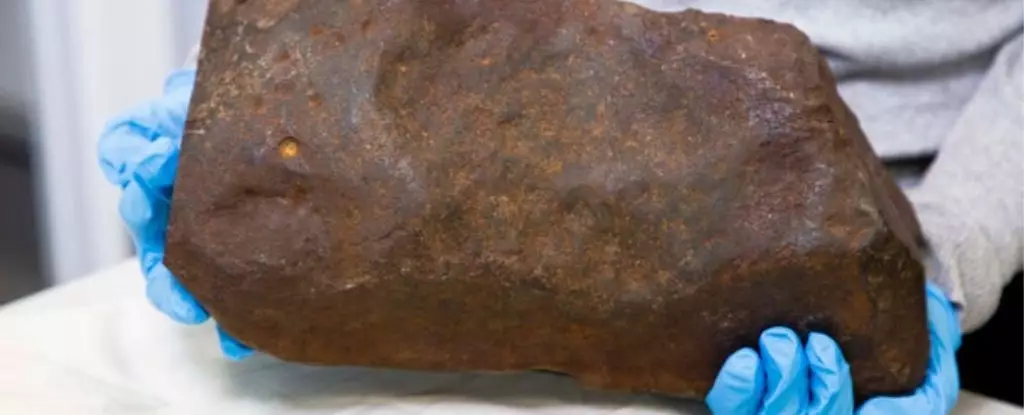In 2015, an ordinary day became extraordinary for David Hole when he embarked on a routine prospecting venture in the Maryborough Regional Park of Victoria, Australia. Equipped with a metal detector, Hole stumbled upon an unusually dense, reddish stone nestled within yellow clay soil. The immediate allure of a possible gold nugget captivated him, especially considering Maryborough’s heritage as a hotspot during the gold rush of the 19th century. His excitement sparked a fervent obsession; determined to unveil the treasure he believed lay within, he resorted to various tools, from rock saws to sledgehammers, in a futile effort to crack the tough exterior of the stone.
What Hole initially perceived as a simple geological curio turned out to be an enigma, one that would require professional scrutiny to unravel. His relentless attempts to break open the mass symbolize a broader human tendency to seek treasure in the Earth, not merely for monetary gain, but also for the wonder of discovery itself.
Unable to reveal the secrets within the rock, Hole eventually decided to take the specimen to the Melbourne Museum for expert analysis. Once there, geologist Dermot Henry, with years of experience in identifying meteorites, concluded that what Hole had in his possession was indeed an extraordinary find. Henry, who had examined countless submissions over his 37-year tenure at the museum, declared this to be one of the rarest occurrences—an actual meteorite rather than the mining artifact Hole had presumed it to be.
The expert observation underscored how identifying meteorites requires specialized knowledge and experience. Henry described the meteorite’s unique sculpted and pockmarked surface, a characteristic of objects that traverse the atmospheres of planets. This visual feature lends insight into the celestial journey the meteorite undertook before reaching Earth. Furthermore, Bill Birch, another geologist from the museum, pointed out that the meteorite’s unexpected heft was not typical of terrestrial rocks, reinforcing its distinctive nature.
The researchers ultimately determined that this meteorite, named Maryborough after the town of its discovery, weighed an impressive 17 kilograms (37.5 pounds). It’s not merely a heavy rock; scientifically categorized as an H5 ordinary chondrite, its cutting revealed an intricate structure filled with chondrules—tiny, round particles that form the building blocks of larger celestial bodies. The meteorite is estimated to be about 4.6 billion years old, providing a rare glimpse into the early solar system and the processes that led to the formation of planets, including Earth.
As Henry famously noted, meteorites serve as “the cheapest form of space exploration.” They allow scientists to study cosmic data that could otherwise be unobtainable without vast expenditures of time and resources. This uniqueness makes the Maryborough meteorite not only a scientific treasure but a point of connection to our solar system’s history.
Despite posing a fascinating inquiry into its origins, the precise source of the Maryborough meteorite remains tantalizingly elusive. Researchers speculate that it may have emerged from the asteroid belt situated between Mars and Jupiter before being dislodged by a collision, allowing it to traverse the void of space until ultimately plummeting to Earth. Carbon dating suggests it may have been on our planet for somewhere between 100 and 1,000 years, aligning with recorded meteor sightings from 1889 to 1951.
The rarity of this discovery adds another layer of value; it stands as one of only 17 meteorites ever recorded in Victoria, illustrating the point that while gold may glitter, celestial discoveries are far less common and vastly more significant for understanding our universe.
The story of the Maryborough meteorite serves as an encouragement for individuals to explore their surroundings with a curious mind. Just as David Hole did not rely solely on traditional prospecting for gold, others are encouraged to examine their natural environment for other potential discoveries. The hidden wonders of our planet—be they geological, biological, or cosmo-physical—invite us to re-evaluate what we consider valuable.
In essence, the Maryborough incident exemplifies the sublime convergence of human curiosity and the mysteries of the cosmos. The next time you encounter a heavy rock, consider looking beyond its surface; you might just unearth a piece of the universe waiting to tell its tale.


Leave a Reply